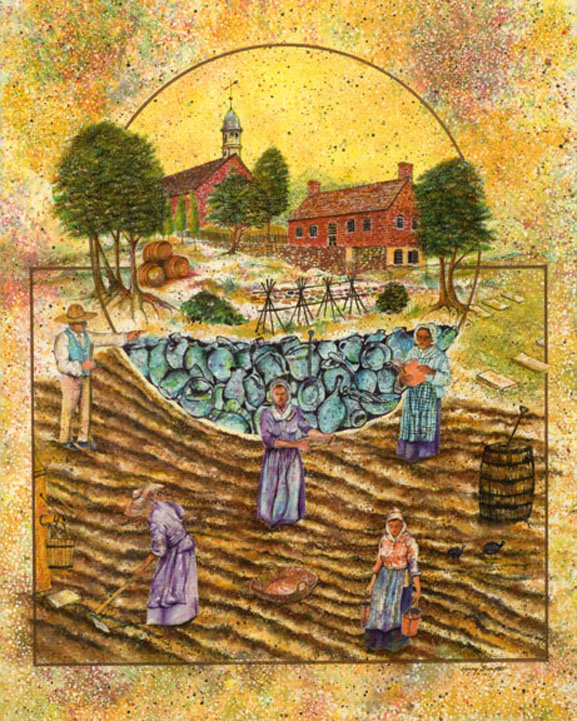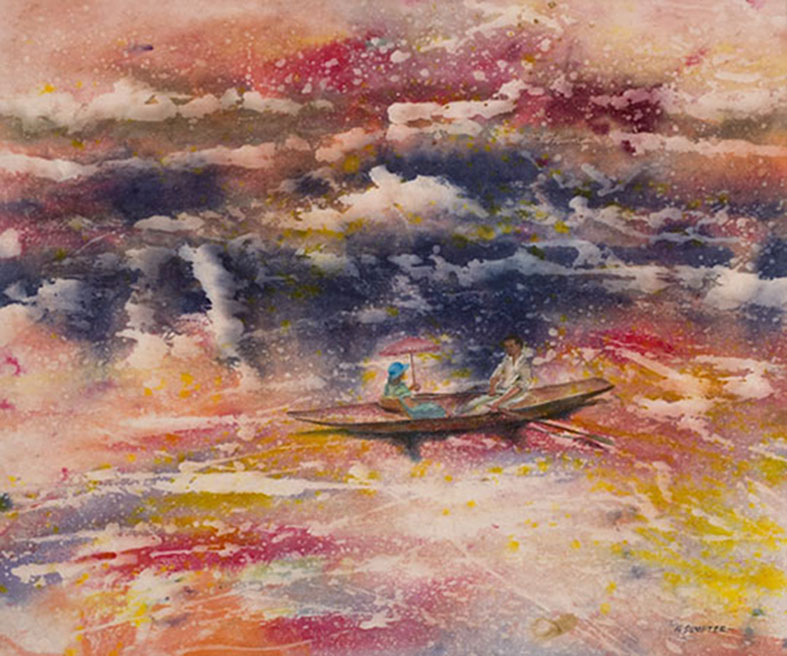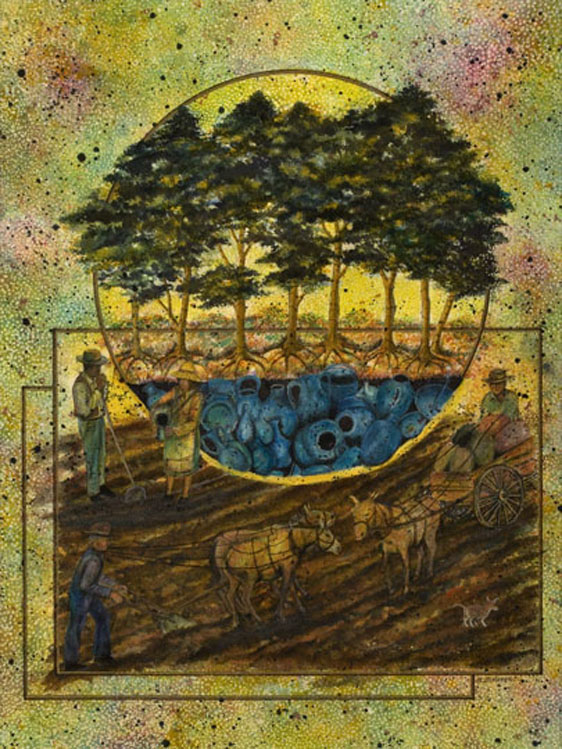Batik is an ancient textile craft with origins linked to Africa (Egypt), China, Japan, and Central Asia; but it is notably practiced today in Malaysia and Indonesia. The fine fabric patterns were originally created for royalty, and easily recognized by its fabled crackled effect. A two meter (six foot) length of the highest quality completed in the traditional method can take several months to complete. Often, a team effort in production is needed; subsequently, the finished product is treasured highly. I don't have this luxury.
The word batik means "wax painting." The finest work uses fabric with a high thread density and a flat, even surface such as cotton or silk. Modern fabric must always be washed many times to remove all traces of sizing or additives before dyeing. The material is then stretched or placed over a surface to enhance penetration of the hot resist (bees wax, resin, or paraffin. I usually prefer waxes. The image is then drawn in carefully with charcoal. Wax is applied to areas of the cloth not to receive dyes, with a special tool called the "chanting" (a brass bowl tool with a fine spout and wooden handle developed in Java). Application of wax to designated areas of the total piece may take months to complete. Dye is then applied to the fabric either by brushing or dipping (for up to two hours). The dyes used are not common household dyes but special fiber-reactive dyes, which do not run or fade.
The fabric is allowed to dry for up to twenty-four hours to cure, then ironed for about five minutes per square foot area (it can take thirty minutes or more to iron the dyed fabric between sheets of newspaper, which must be constantly changed, aiding in removing the wax and setting the dye). The fabric is then rinsed in cold/boiling water until clear, requiring up to ten gallons for a two square meter area. Using several hundred gallons for each work is not uncommon. (I have been searching for a reclamation method to cut water usage, not quality). The fabric is then dried slowly, away from heat and sunlight so that colors are permanent and fadeless.
The complete process is repeated each time a color is added. In some paintings, I may use up to thirty colors. In recent years, I worked on a piece for almost ten years. The dyes alone can be many times more expensive per painting than a comparable work done in traditional mediums. Each dye mixture is good for only a few hours, often rendering brushes to become unusable after a few applications of dye mixtures. It is desirable to use well-crafted and expensive brushes, because the jelly-like salt solution will destroy cheap brushes much quicker. I have also developed my own dye pastes and tools for special effects and usage. Hey! I am having fun. Normal household bleach has no effect on the dyes when they are set properly. The process is labor-intensive and unpredictable, because no matter how good you are; sometimes the dyes will not take, requiring redoing the wax process for that particular color. The technique used is my own unique approach, and has no association with the watercolor process which it appears to emulate. The final step, presents its own set of problems, namely mounting the work on an acid-free surface. I then celebrate the birth of a new work. Hey! I am having fun! Enjoy.



